Meet Miami’s most exciting chefs
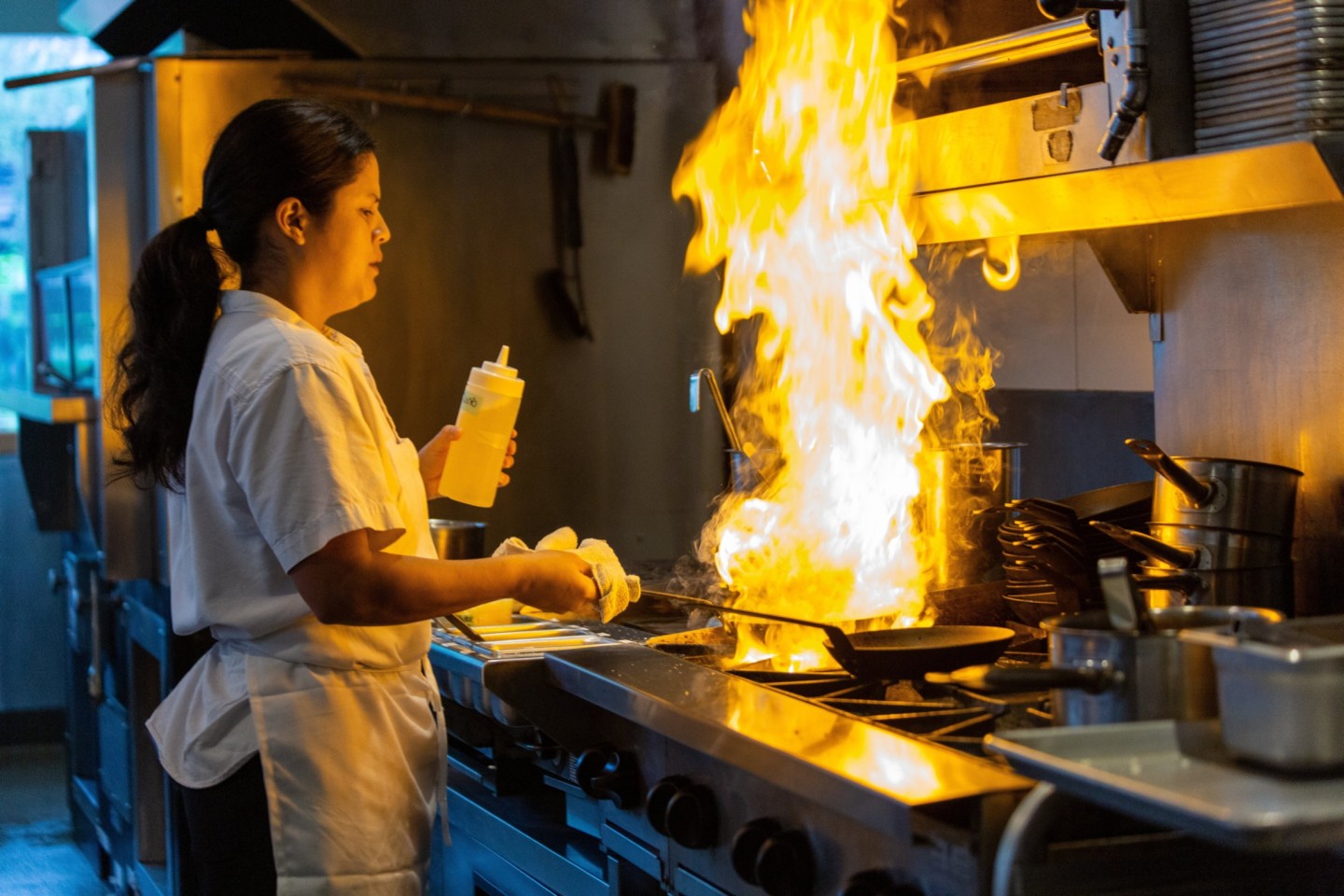
Roula Khalaf, Editor of the FT, selects her favourite stories in this weekly newsletter.
This article is part of a guide to Miami from FT Globetrotter
New York may be the culinary capital of the United States, home to more award-winning restaurants than any other American city. San Francisco, the birthplace of the farm-to-table movement, boasts some of the country’s most pioneering chefs. But — and stay with me — Miami, in this moment, may be the US’s most enjoyable place to eat.
Whatever you fancy is at your fingertips, from homestyle Haitian cookery to upscale omakase and everything in between. Throw in the annual wine and food festival that brings tens of thousands of diners and industry insiders to the city, and the Covid-era influx of top culinary talent from around the world, and you start to catch my drift. But what’s particularly special in Miami is the current generation of trailblazing local chefs who are cooking with style, ingredients and influence that you won’t find anywhere else.
Miami has long been honing its place in America’s culinary conversation. In the 1980s and ’90s, around the same time as the New American cuisine movement kicked off, a generation of young South Florida chefs that became known as the “Mango Gang”, including Allen Susser, Norman Van Aken and Mark Militello, set out to define the city’s culinary style through its cultural influences. They experimented with fusion techniques, using regional ingredients and Latin American and Caribbean traditions to create a new style of upscale dining, planting the seeds for Miami as a gourmet getaway.
Decades of mass immigration to Miami have transformed its homegrown culinary landscape further; today, more than 54 per cent of Miamians were born outside of the US. “There’s not a one clear path to what a Miamian looks like,” says Valerie Chang, a 31-year-old chef-restaurateur who moved to Miami from Peru when she was a child. “And Miami cuisine today is a mix from all the immigrants who landed here and brought flavours from their homes. We’re a hub for different cultures.”
As a result Miami’s dining scene is fresh, surprising and unique to the city — and increasingly attracting critical acclaim (including the recent arrival of the Michelin Guide). “Miami is constantly evolving,” says Jeremy Ford, chef-owner of Stubborn Seed, which was awarded one of Florida’s first Michelin stars last year. “Miami cuisine to me now is not what it was five years ago, a year ago, or even a day ago.”
Today’s top chefs, whom industry insiders sometimes refer to as the New Mango Gang, come from a variety of different backgrounds, and they’re cooking contemporary cuisine with a style and panache that reflects Miami’s multicultural make-up and its particular joie de vivre. These restaurants are some of the city’s contemporary greats.
Jeremy Ford | Stubborn Seed
101 Washington Avenue, Miami Beach, FL 33139
Good for: A vibrant, memorable meal that will make you smile
Not so good for: Tourists — you’ll wish you could go back more often
FYI: Beyond the menu, chef Jeremy Ford takes a curator’s approach to the restaurant, from selecting the modern art on the walls to the music that feeds your eardrums
Opening times: Sunday—Thursday, 6pm-10pm; Friday—Saturday, 6pm — 11pm
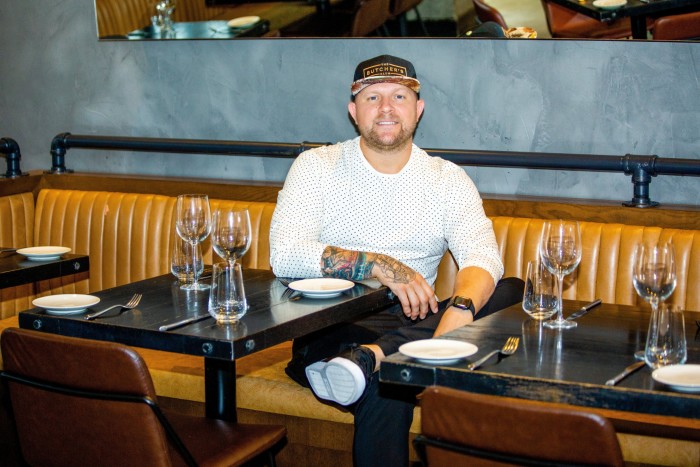
By now, Jeremy Ford is one of the more recognisable chefs in Miami. Confident, jovial and tattooed, Ford won over audiences when he took US television’s Top Chef title in 2015, while he was working for the legendary Jean-Georges Vongerichten. The Florida native has since opened a handful of restaurants, including his first and jewel in the crown, the vibrant and unapologetic Stubborn Seed in Miami Beach, where you’ll see him in the kitchen most nights.
Stubborn is an experience you best arrive hungry for. Since it was awarded one of Florida’s first Michelin stars last year, it has shifted to tasting menu-only (excluding at the bar and over the summer season when Miami empties). This is no hardship: the food is sensational.
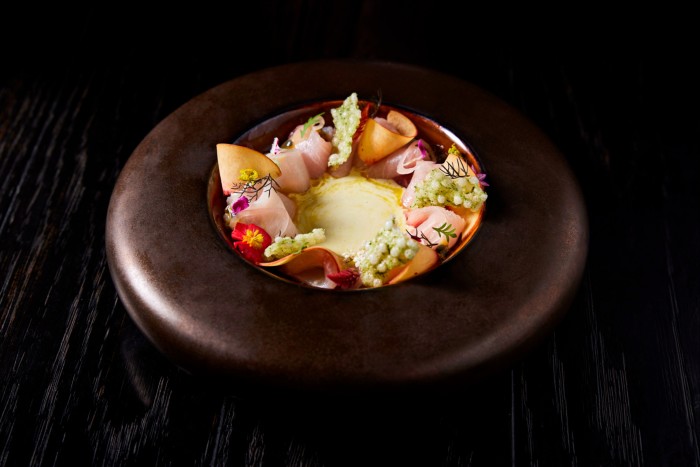
Ford’s dishes hit every taste bud like a paint by numbers exercise, perfectly designed and balanced. Take the red snapper course, a celebration of textures and layered flavours, with cauliflower both roasted and raw, pickled onions, and a sweet potato crisp topping, finished with an exclamation point: a zippy Thai curry-like sauce with notes of Kaffir lime and lemongrass. Duck confit tortellini, with shaved winter truffle, hazelnuts, butternut squash purée — and a bath of duck consommé that takes three days to make — hid tiny squeezes of a sour black-cherry gel for an acidic cut through the nutty, meaty richness. This is the essence of Ford’s cooking. You can trace the references: tortellini in brodo meets duck and cherries — a northern Italian comfort food marries a French classic — but it’s fresh, inventive and full of surprises.
Even Stubborn’s bar snacks are ramped up to another level. Crusty sourdough is served with Marcona almonds, chicken liver parfait and an unusual but tasty bowl of warm olives, sun-blushed tomatoes and cured duck, which combined are wonderfully salty, sweet and smokey. “I had so much fun creating this dish with my chefs,” Ford says. “We wanted to do something for the bar, so we thought we’d do some olives and nuts, but nothing ever just ends there.”
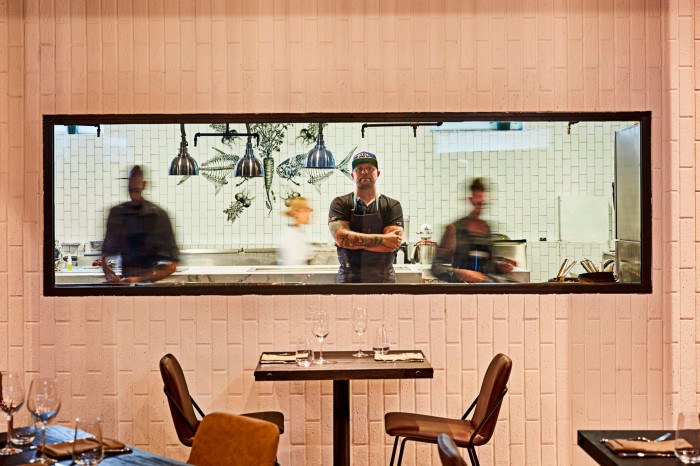
Ford proudly runs a collaborative kitchen, from farm to table. Every Tuesday, he says he spends hours driving around Homestead, an agricultural area in Miami-Dade county, visiting all of the farmers he sources from and working with them to select produce. Back at the restaurant, “if there’s a new ingredient or a process I want to try, I’ll challenge the team to come up with something”, he says. Everyone gets a shot at putting a dish on the menu, and Ford’s happy to tell me that one of my favourite dishes, the red snapper, could be largely credited to his chef de cuisine, Kyle Campbell.
I first dined at Stubborn in late 2021, and vowed to return. During my most recent visit earlier this year, I was struck by how the crafting of each dish had been elevated from excellent to extraordinary. I left confident that Ford should clear shelf space for more trophies to come. Eight-course tasting menu, $175
Valerie Chang | Maty’s
3255 NE First Avenue, Miami, FL 33137
Good for: Elevated Peruvian home-cooking
Not so good for: Clothing with weak seams. It’s impossible to stop eating
FYI: Having worked in restaurants since she was a teen, chef Valerie Chang says that she has experienced the toxicity of the restaurant industry first-hand and has vowed to be a force for good for women. She runs a majority-women brigade at Maty’s
Opening times: Sunday and Wednesday—Thursday, 4pm — 10pm; Friday—Saturday, 4pm — 11pm
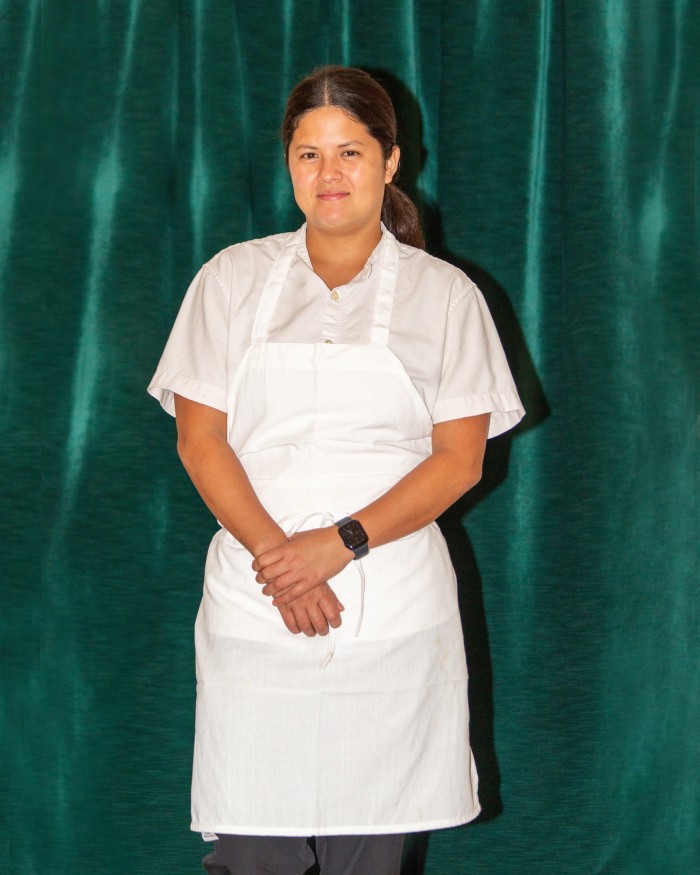
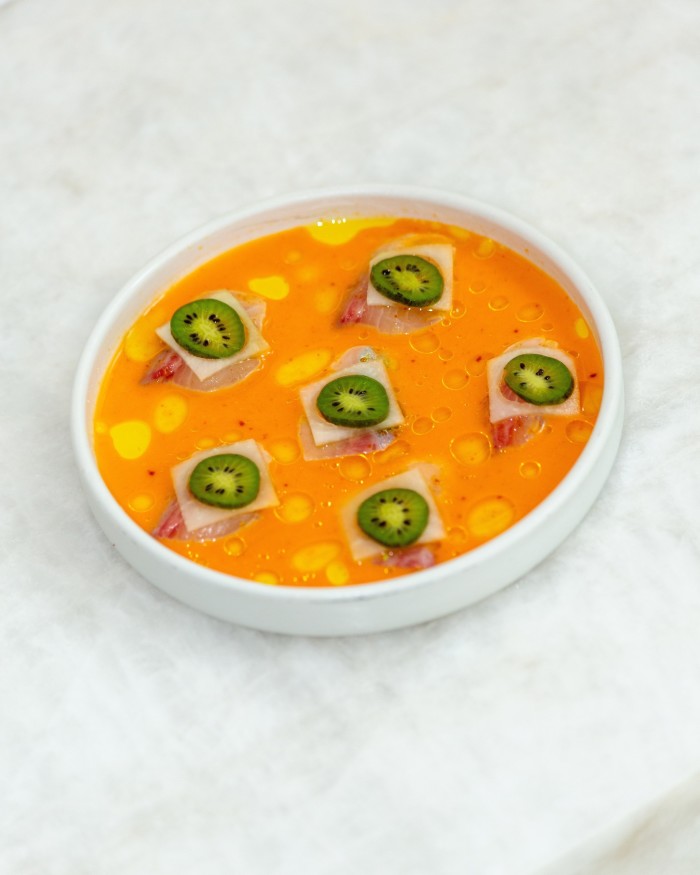
It doesn’t matter how hot it is outside, if it’s on the menu, the butternut squash soup is an absolute must when dining at Maty’s. It’s thick, flavourful and impossibly smooth, and I am shocked when chef Valerie Chang tells me that this take on crema de zapallo, a dish served throughout Peru, doesn’t have any cream in it at all. It’s a family recipe (she enjoyed it often when she was growing up in the northern city of Chiclayo), as are most dishes at Maty’s, which is named after her paternal grandmother.
The whole restaurant, which opened earlier this year, is a homage to Maty, with whom Chang lived after her parents moved to Miami to work when she was a toddler, and until she joined them when she was 10 years old. Maty still lives in Peru and now suffers from Alzheimer’s. “I was always closest to her, and it was important to me to honour her,” Chang says.
Along the walls, there are pictures from old family albums, alongside mementos Chang found that date back to the 1930s, including love letters from her grandparents’ courtship, her grandmother’s elementary school report cards and other documents. “My grandmother was super thoughtful, she kept everything,” Chang says. “She kept every letter we ever sent her.”
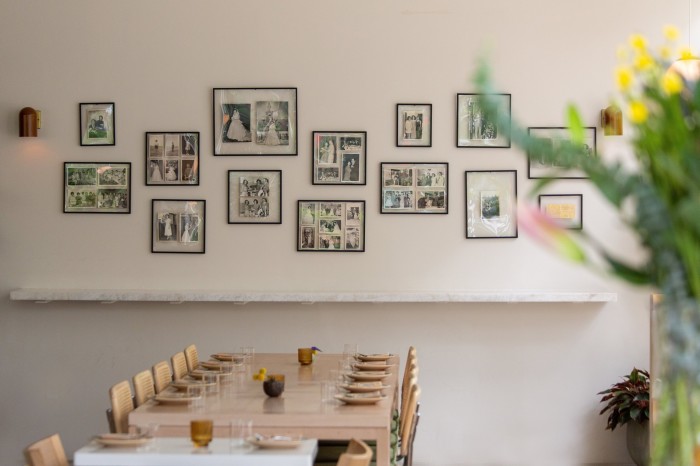
The love for and influence of her grandmother shines through the food at Maty’s: dishes are elevated, but soulful and true to tradition, with an emphasis on using seasonal ingredients and local produce. The kanpachi (amberjack) tiradito, a crudo-like dish of raw fish in tiger’s milk, a spicy, citrus-based marinade, is acidic and bright, and gracefully mellowed by earthy giant corn. Chang’s arroz con pato (duck with rice), a popular dish in the region she’s from and one that can be easily overcooked or dry, is beautifully moist, and I can’t stop shovelling it into my mouth while we’re chatting. (There are stains on my notes to prove it.)
Chang is best known as one half of the James Beard Award-nominated sibling duo behind Itamae, a Peruvian-Japanese restaurant in Miami’s Design District. (Itamae, by the way, is well worth a visit too; though its original site closed in August, it will reopen this year next door to Maty’s as a 12-seat omakase.) During the pandemic, she took a step away from Itamae and took a private chef job for the music producer Timbaland. “Nando [chef Fernando Chang, her brother] wanted to take the restaurant more Japanese, I wanted to go more Peruvian, and we knew that we needed to find our way to our own space,” she says. “I knew that mine would come.” Starters and mains, $9 —$74
Luciana Giangrandi & Alex Meyer | Boia De
5205 NE Second Avenue, Miami, FL 33137
Good for: Pasta. (Everything is tasty. But the pasta!)
Not so good for: It’s hard to get a reservation — it’s small and very popular
FYI: If you are having trouble narrowing down what to order (which you probably will), you can ask for half portions
Opening times: Daily, 5.30pm — 10.30pm

When I told a contact that I was having dinner at Boia De, she had some advice: take a taxi. It’s in a bit of a random location, namely a nondescript strip mall, between a coin laundry and a medical centre, out in what she called the dodgy end of Wynwood. Noted: it’s a bit of a destination restaurant, and no wandering around aimlessly after dinner. None of this should put you off, and anyway, it’s certainly worth the cab fare.
When I arrive at Boia De, an intimate Italian-American restaurant helmed by Luciana Giangrandi and Alex Meyer, chefs, co-owners and spouses, it immediately feels right: the atmosphere is lively and friendly, happening but not too loud, cool but not pretentious. I’m pleased to see Franciacorta, the lesser known but far superior Italian sparkling to the Goliath prosecco, on the wine list, and a menu that is small and perfectly formed. Every dish looks like a banger.
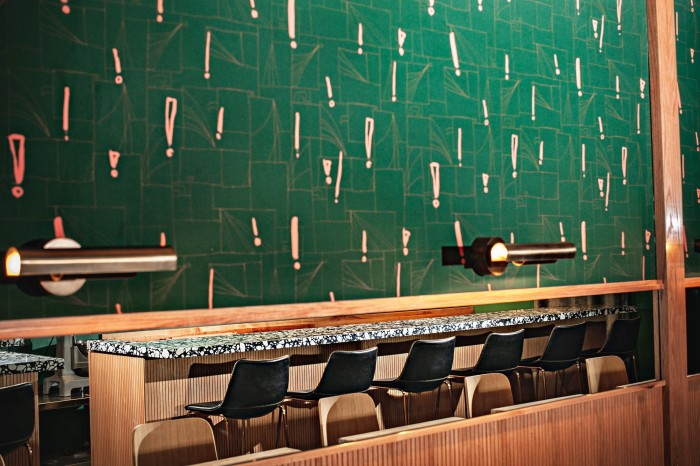
This is, of course, by design. “We have a very small space here, the entire restaurant including the kitchen is 910 square feet, so we had to be wise in terms of not including too much,” Giangrandi says. After working in some of New York’s top restaurants (Carbone, Scarpetta and Eleven Madison Park, to name a few) and settling in Miami, Giangrandi’s hometown, the duo also felt that there was a gap in the market they could fill. “We wanted [Boia De] to be a place where we’d go out for dinner: a casual environment with some high-end ingredients and really nicely done food,” she says.
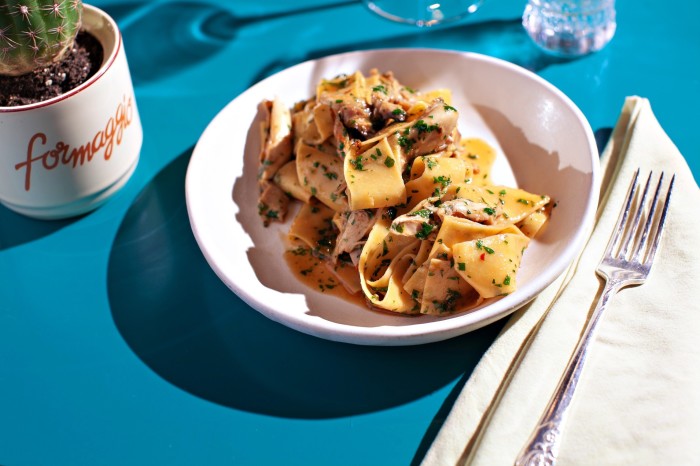
Dishes tend to skew Italian with an American twist, or quite the opposite, such as fried potato skins, the ubiquitous US bar snack, that cup gooey stracciatella cheese, or a vitello tonnato-like dish done with diced raw beef and crispy shallots. As a polentona, I am naturally drawn to the crispy polenta: thick Jenga-block-like slabs of the stuff that have been fried and topped with marinated aubergine and ricotta salata. It’s a clever bit of Italian regional fusion; the vinegary aubergine and the salted ricotta nod to Sicilian classics (caponata and pasta alla norma), while earthy polenta historically hails from the north.
However, the dish I have not stopped thinking about for months now is where Grangrandi’s stint cooking in Tuscany shines through: Boia De’s pappardelle alla lepre — thick ribbons of pasta smothered in a sauce of braised rabbit that’s been slow-cooked in fat, with tender pieces of meat that hold their shape but fall apart beautifully the moment a fork makes contact. “It’s been on the menu since we opened [in 2019] and will probably not leave,” Giangrandi says. I will personally hold them to that. Starters and mains, $13 —$35
Michael Beltran | Ariete
3540 Main Highway, Coconut Grove, FL 33133
Good for: Splurging on a seriously impressive and indulgent tasting menu
Not so good for: Your finances and cholesterol levels. Everything here is rich
FYI: Chef-owner Michael Beltran, who grew up in the city’s Little Havana neighbourhood, named the restaurant for his grandparents, Cuban exiles in Miami, who instilled in him a love of food. They had worked at a bakery called Ariete in Pinar del Rio, Cuba
Opening times: Sunday—Thursday, 6pm — 9.30pm; Friday—Saturday, 6pm — 10pm
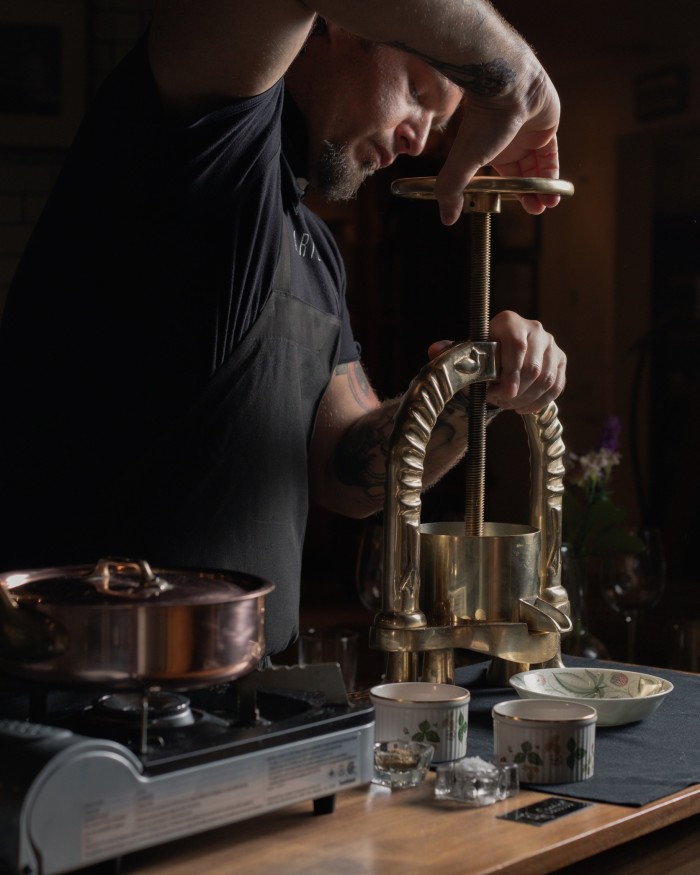
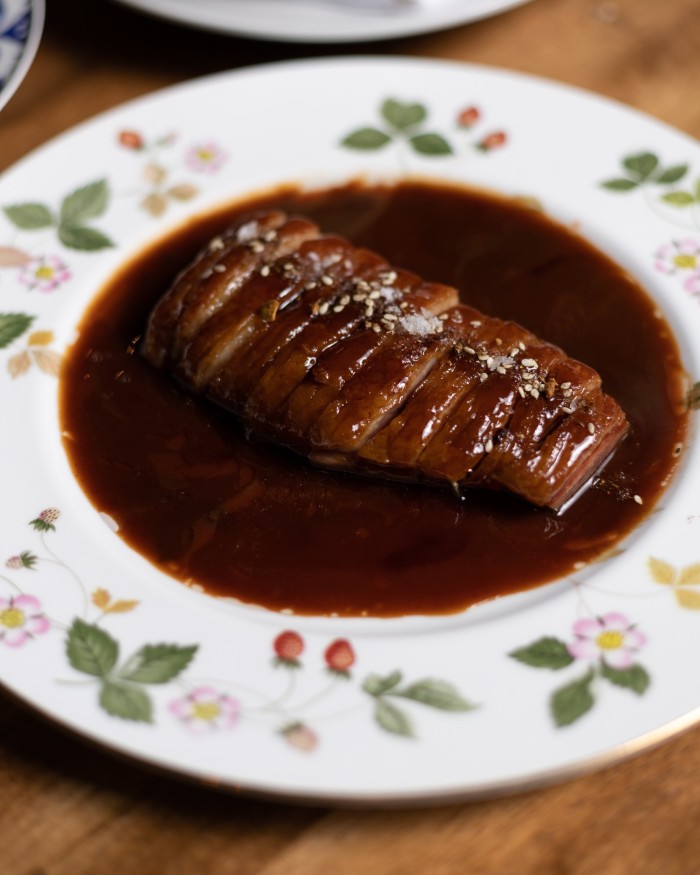
Not many visitors to Miami may make it to Coconut Grove, a leafy, chichi residential district in the southern end of the city. Ariete, a sensational restaurant from chef-owner Michael Beltran, offers plenty of reasons to.
Though based in the city’s oldest neighbourhood, Ariete perfectly encapsulates Miami-style modern fine dining: it’s refined yet relaxed, with a menu that combines international influences, namely Beltran’s Cuban heritage, and a devotion to local ingredients, executed with classic French technique. Diners can choose from two six- and seven-course tasting menus, Clásicos or Modernos, or opt to order à la carte, all a serious feat in a restaurant of its size and so in demand (it serves 50-80 covers per night). Oh, and he also does canard à la presse tableside for two, because why not find time to wheel out a medieval-looking contraption to compress various parts of duck into a rich sauce on top of doing everything else? (It makes for a rather fascinating 45-minute show.)
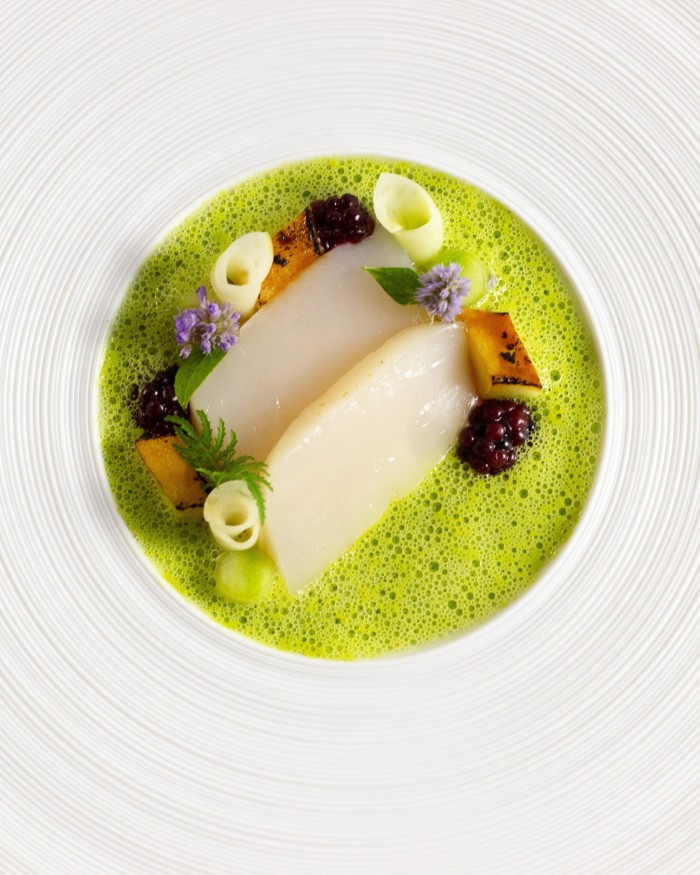
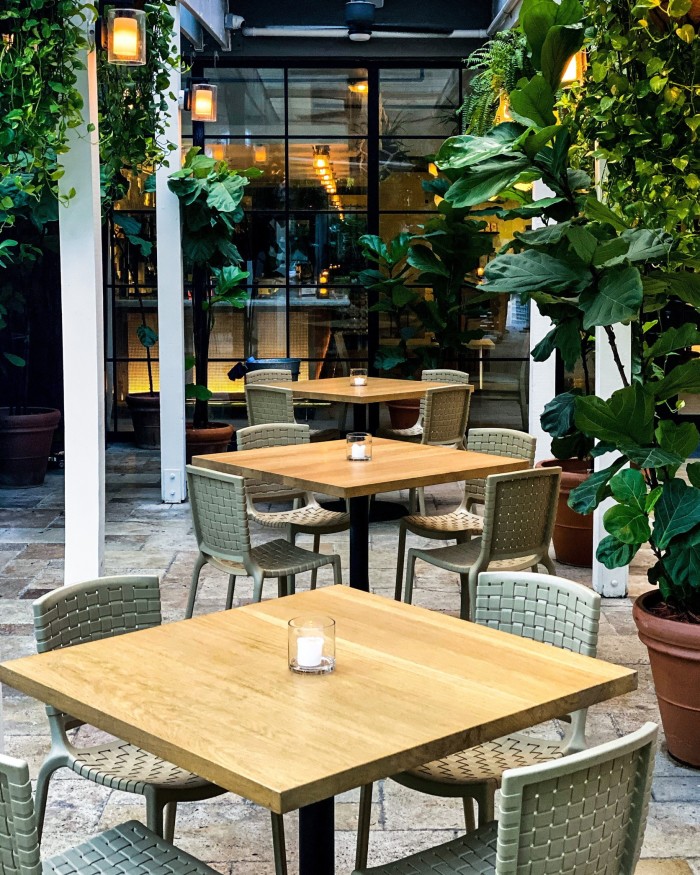
Whatever your chosen adventure, a meal at Ariete starts with a stunning amusing of your bouche. Beltran is big on flavour. I enjoyed a spiced winter squash tart, flavoured with maple labneh and espresso-caramelised pumpkin seeds, which looked fairly simple but was a real showstopper. Even the house bread roll, served alongside, brought wow factor: a warm, crispy sphere hiding cloudlike dough, slathered in butter and topped with crunchy salt — satisfying like a filthy shopping-mall pretzel, and yet a technically impressive bit of baking. Foie gras fans will certainly enjoy the seared slab served with a sweet-and-sour caramel and a plantain pavé (a take on an old-school Cuban technique to use up overripe plantains). The highlight for me, however, was the scallop dish, sliced and served in its shell almost raw, with three textures of strawberries and a consommé, with a touch of peppery Thai basil — Beltran’s clever take on a crudo. With cooking this creative, charming and confident, Ariete is very good indeed. Starters, from $15; mains, from $42; tasting menus, from $145
Niki Blasina visited Miami as a guest of The Food Network South Beach Wine & Food Festival presented by Capital One (SOBEWFF®). The next event will take place from February 22 to 25, 2024
Which Miami chefs have impressed you recently? Tell us in the comments below. And follow FT Globetrotter on Instagram at @FTGlobetrotter
Cities with the FT

FT Globetrotter, our insider guides to some of the world’s greatest cities, offers expert advice on eating and drinking, exercise, art and culture — and much more
Find us in Miami, London, Tokyo, New York, Paris, Rome, Frankfurt, Singapore, Hong Kong, Toronto, Madrid, Melbourne, Copenhagen, Zurich, Milan and Vancouver
Comments